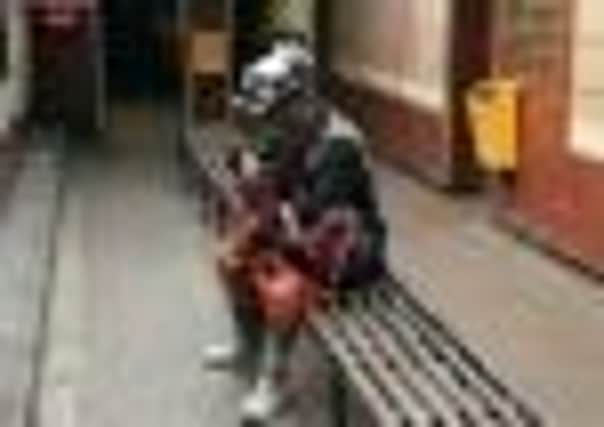Ian McMillan: Beneath the surface, we’re all walking on air


I remembered that last tiny earthquake we had a couple of years ago when I woke up suddenly because I thought somebody was knocking on the window with a stick and then I decided that I’d just been dreaming it and went back to sleep in the innocent belief that the Earth wouldn’t shift very much. Thinking of Japan, I tried to imagine that feeling times a hundred, times a thousand, and I just couldn’t do it.
I’ve been thinking a lot about what happens under my feet this week because over the last couple of years I’ve been writing poems for a book and an exhibition called Drift, with photographs by Bradford-born Ian Beesley, and we’ve just completed it. The words and images are on display at the National Mining Museum near Wakefield until May: go and have a look!
Advertisement
Hide AdAdvertisement
Hide AdThe exhibition is about Hay Royd Pit, otherwise known as Flacks Mine, the last private pit in Yorkshire. It’s hidden away down a leafy path near Denby Dale, and I never used to know it was there, either.
In fact, I was talking to some people from Skelmanthorpe, a couple of miles away, and they didn’t know about it. Hay Royd is a deep drift mine, employing up to 20 men, working far under fields and woods and near estates of posh new houses. One of the miners told the tale of when he went to see a lady in a house because they were going to be blasting underground not far from her place and they wanted to know if the noise would disturb her. The miner and the woman sat in the kitchen. I imagine they might have been having a cup of tea; maybe there were saucers and a little plate of biscuits.
The miner contacted his mate at the coal face and his mate set off some dynamite and there was a small noise that felt like it was in the middle distance or somewhere in the air just above the garden. It sounded like this: ‘whump’. The woman nodded and said: “That’s okay. It just sounds like a wardrobe door shutting.”
People working under your carpets; people tunneling a few metres below your boots as you stroll down a country lane. Two groups of people invisible to each other: you can’t hear them digging as you wander, they can’t hear your footsteps as they blast. Yorkshire’s riddled with holes, and tunnels, and shafts and drifts like a piece of comedy cheese that you see on a cartoon. And yet, somehow, we still feel safe.
Advertisement
Hide AdAdvertisement
Hide AdYears ago, when there were still lots of pits open, you’d sometimes get a crack snaking down your back room wall, thin as a spider’s leg but with the potential to get wider and deeper. A man from the NCB would come and confirm that you’d got subsidence and then some chaps with overalls and ladders will make it as good as new. Until the next crack. Sometimes, of course, the underground movements have terrible effects round here; I remember the 1975 Houghton Main Colliery disaster, when five men died in the dark. It was Friday the 13th; I got off the Wath Grammar School bus and noticed groups of men and women standing anxiously on street corners like people in an old film. Us schoolkids stood stunned in our blazers and thought of tunnels and fire.
I got thinking about those passages that people always believe go between the big house and the church, or the pub and the big house, or the church and the pub, or the pub and the pub. There are secret tunnels for the Lord of the Manor to scuttle down when he doesn’t want to be seen, or there are passages straight to the tap room from the vicar’s drawing room. There may be a few of these tunnels but not as many as people say there are; I reckon they’re really tunnels that go straight through your imagination, rather than through anywhere real. There’s a need in us to believe that there’s more to the world that meets the eye, that below the streets there are other streets full of cobwebs and mystery.
I’m surprised that the Yorkshire stands up at all, to be honest; given the amount of air beneath it, it ought to fold in itself like a badly-made model. So I guess the lesson is: respect the earth. It moves, it shifts. The surface is just the surface, after all.